Apprehension, excitement, and salty Slack chats: Inside Ninja Theory just weeks out from the release of Bleeding Edge
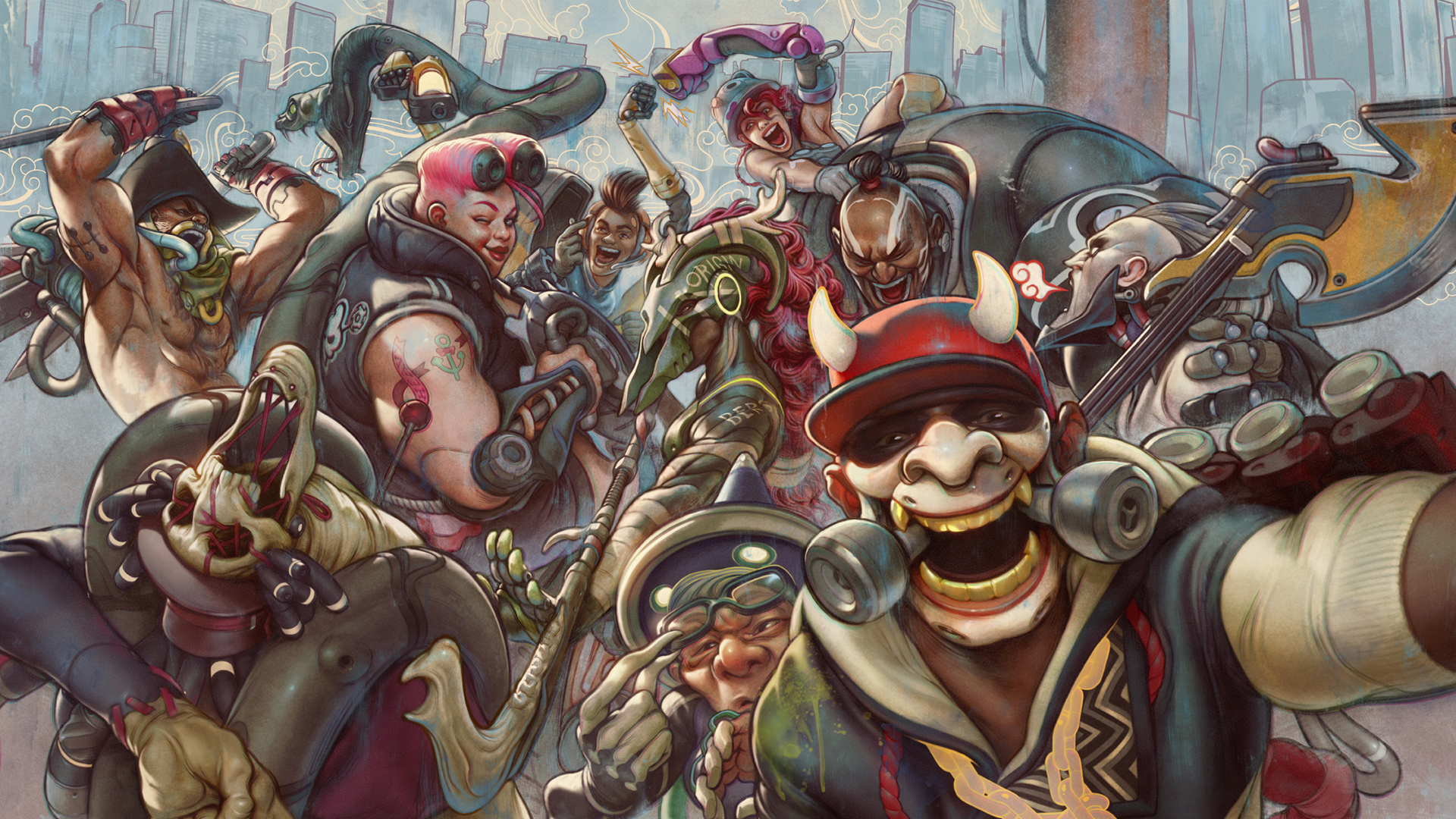
In Bleeding Edge, you can see echoes of Ninja Theory's past and the potential of its future colliding. Behind the game, a small group of industry veterans who exhibit a blend of assuredness and apprehension when the topic of conversation turns towards this passion project, now just weeks away from release. It's easy to understand why, too. Ninja Theory hasn't written a rulebook on multiplayer game design, and the team has barely had time to read any others for guidance. As a result, Bleeding Edge is being built by a dedicated group working through the intricacies of a melee-combat focused multiplayer game on the job, together, one system and mechanic at a time.
This is what I'm thinking about as I wait for a round of Bleeding Edge to begin. I'm sat in what was once Ninja Theory's largest meeting room, a space used to iron out the details of games like Heavenly Sword and Enslaved: Odyssey to the West. Later, the area was transformed into a makeshift performance capture studio, built out of spare parts purchased from high-street tech outlets, Ikea, and Amazon. Now, it is used as a staging area for Bleeding Edge multiplayer sessions. In the corner of the room is a punching bag coming apart at the seams; once used for animation tests during the development of DmC: Devil May Cry and Hellblade: Senua's Sacrifice, now obscured by coats, hidden behind a large television that allows onlooking Ninjas to track the action as it unfolds live in the room. As far as visual metaphors for change go, it's messy – but it gets the job done.
After spending hours with the game, and with many of the team responsible for bringing it to life, it has become clear that this isn't the gamble that many believe it to be. For Ninja Theory, Bleeding Edge is simply the latest in a long-line of calculated risks.
Years in the making
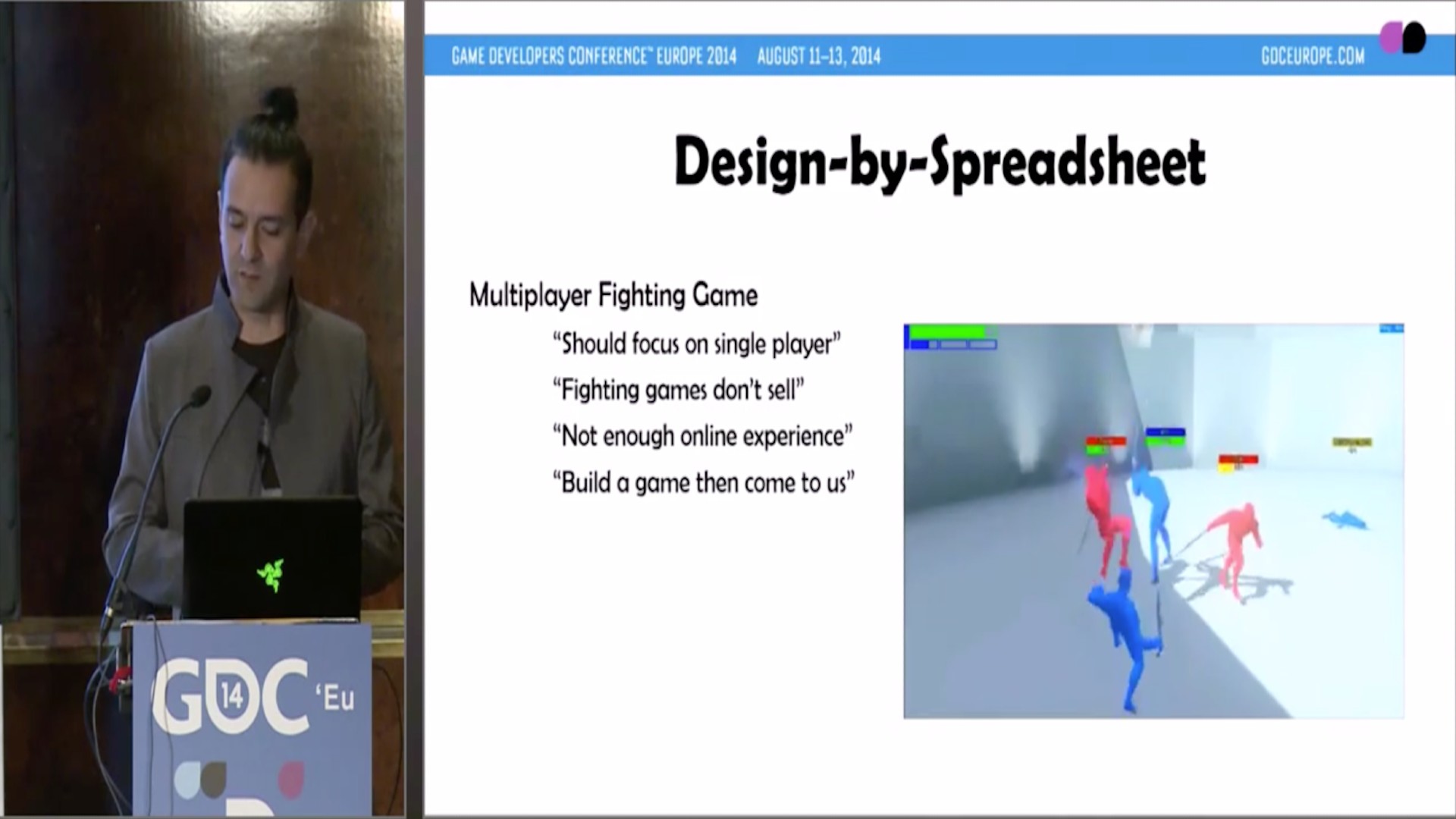
There is a misconception that has taken hold in some corners of the Internet that Bleeding Edge arose out of an acquisition. That Ninja Theory became a part of the Xbox Game Studios family in June 2018 and then had an online multiplayer game ready to present as a playable Technical Alpha just 12 months later to feed some broader strategy out of Microsoft. The truth of it is that while Bleeding Edge is unlike anything that the studio has put out in its past, it is something that Ninja Theory has been thinking about for the better part of a decade. It was going to happen; with or without Xbox backing it.
Bleeding Edge was first shown to the world back in 2014. It was an early iteration of what exists today, a grey boxed proof of concept titled 'Fighter'. Ninja Theory's co-founder Tameem Antoniades brought it up during a GDC presentation – a blink-and-you'll-miss-it moment in a panel otherwise focused on Ninja Theory's bold creative experiment in the space between AAA and indie scale game design.
"With our experience on DmC, we had an edge that few western developers have in combat gameplay. But we had never tackled multiplayer, but we thought it would be interesting to create a multiplayer game based around combat. We had this prototype running early on… we took the concept around to publishers and the response was mixed," Antoniades explained 40 minutes into his 'The Independent Triple-A Proposition' panel, as footage from the impressive prototype played in the background. "One publisher knew we were single-player story guys and were fixated on turning a multiplayer combat game into a single-player story, which wasn't what this was about. Another didn't think that online action-melee would sell, because their spreadsheets said so. Another was concerned that we didn't have much experience in online, and so we would have to do much more to prove the game. But it wasn't something we could fund ourselves, so we had to put it on ice."
Fast forward to 2016, as Ninja Theory pushed through development of Hellblade: Senua's Sacrifice – part of its experiment to make AAA games on an indie scale – and the studio felt confident enough in itself to try again. "The transition from single-player to multiplayer was kind of a natural evolution for us," Warwick Mellow tells me, the studio's principal animator. "Rahni [Tucker] had been working on DmC and had done such a stellar job with the combat… It was like, look, Rahni has proven herself with DmC, we should give her an opportunity to make a game that she'd like to make."
Weekly digests, tales from the communities you love, and more
"That's kind of how it happened. It was an evolutionary thing. It wasn't like 'there's a need for this'," Mellow continues. "It was more like: 'We haven't done it before. We'd like to explore this area of game-making. This little demo kind of had something cool going on. Maybe we could explore it further?'"
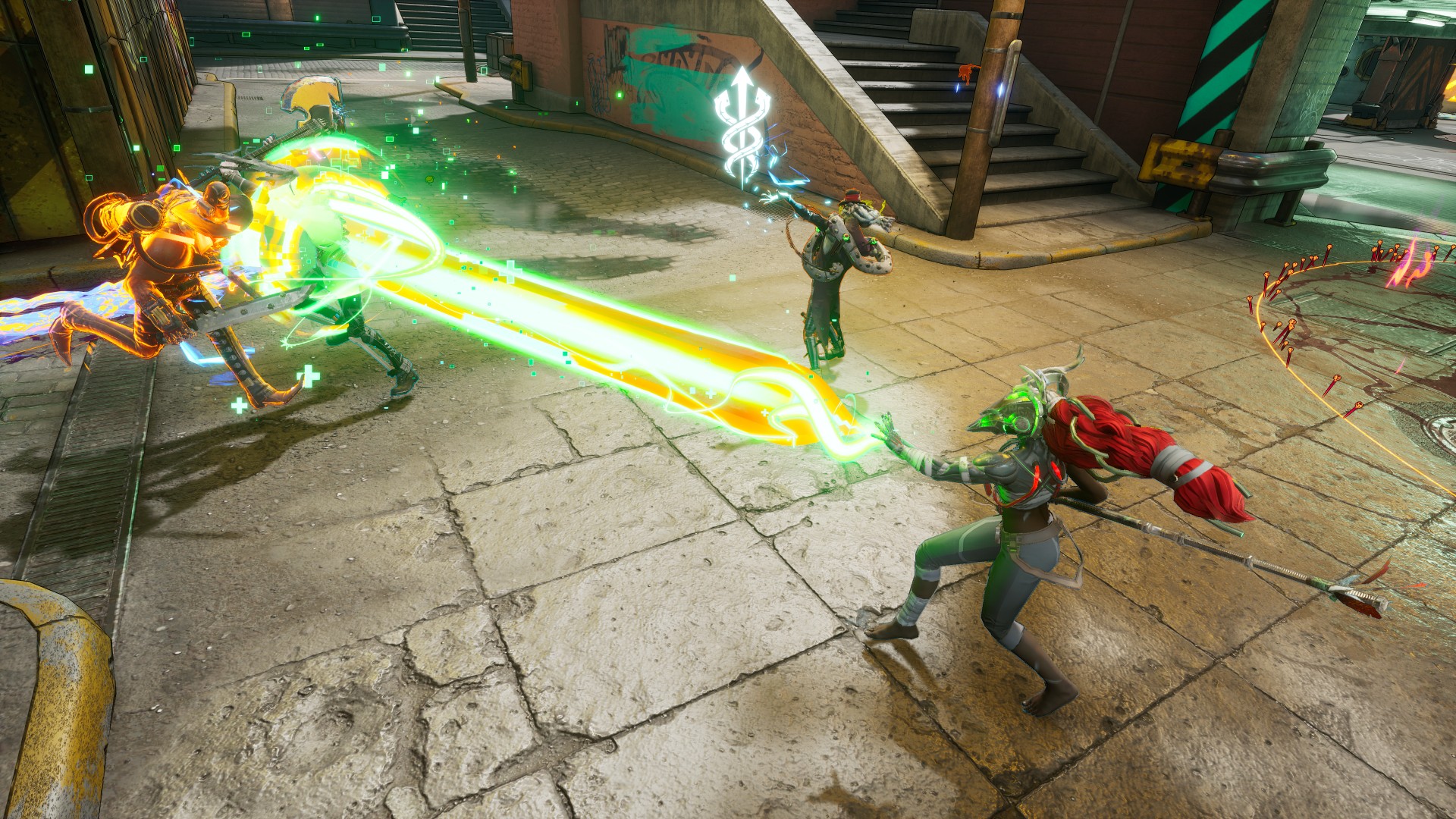
That's exactly what Rahni Tucker set out to do. "Ninja Theory has always made games with good combat, but they've always been single-player," Tucker tells me; the words "Master Ninja" are inscribed on her business card, which translates to creative director outside of the studio's ecosystem. "And we started to ask ourselves, OK, where do we take that next?"
The answer: into an arena that the studio has never heavily invested heavily in. Tucker sees Bleeding Edge as an opportunity to combine one of her areas of expertise with one of her passions in the gaming space. The former, informed by Tucker's experience as the architect of DmC: Devil May Cry's inimitable third-person action combat. The latter, a love of playing support roles in team-based multiplayer games. Bleeding Edge exists in the cross-section. "I found myself thinking, 'Where is this game? Where is the third-person, action combat, competitive team multiplayer game?'"
"I got a really small team together at the beginning," Tucker continues, thinking back to the moment during Hellblade's development, four years ago, where the decision was made to pull this idea off of the ice and give it another shot at life. "There were about seven of us at the start, and we were like, 'alright, let's figure it out. Let's see why no one's made it before. Is it impossible? Maybe. Is it going to be awesome? Hopefully. And, yeah, we just went from there."
Bleeding Edge, as it exists today, is the closest Ninja Theory has gotten to achieving this long-held creative vision. At its core, Bleeding Edge takes the combat systems of DmC: Devil May Cry and strips them back to their simplest form to work in tightly designed multiplayer arenas. To support eight players engaged in frenetic combat and messy engagements all at once, with players able to easily dispatch stylish combos and juggle foes at a distance. Split across Tank, DPS, and Support specialisations, players are able to slip into a number of roles to help well-composed teams to victory in objective-focused game modes.
If you go back to the 'Fighter' prototype you can see how far Ninja Theory has had to sand down the performative nature of the combat system it drew inspiration from to make this all work, but the core of it is there; the movement, the combos, the powers, and the aggressive focus on fun engagements. Bleeding Edge is a game the studio has been playing around with for years now, and perhaps that's the reason that it is so fun and satisfying to play.
A period of uncertainty
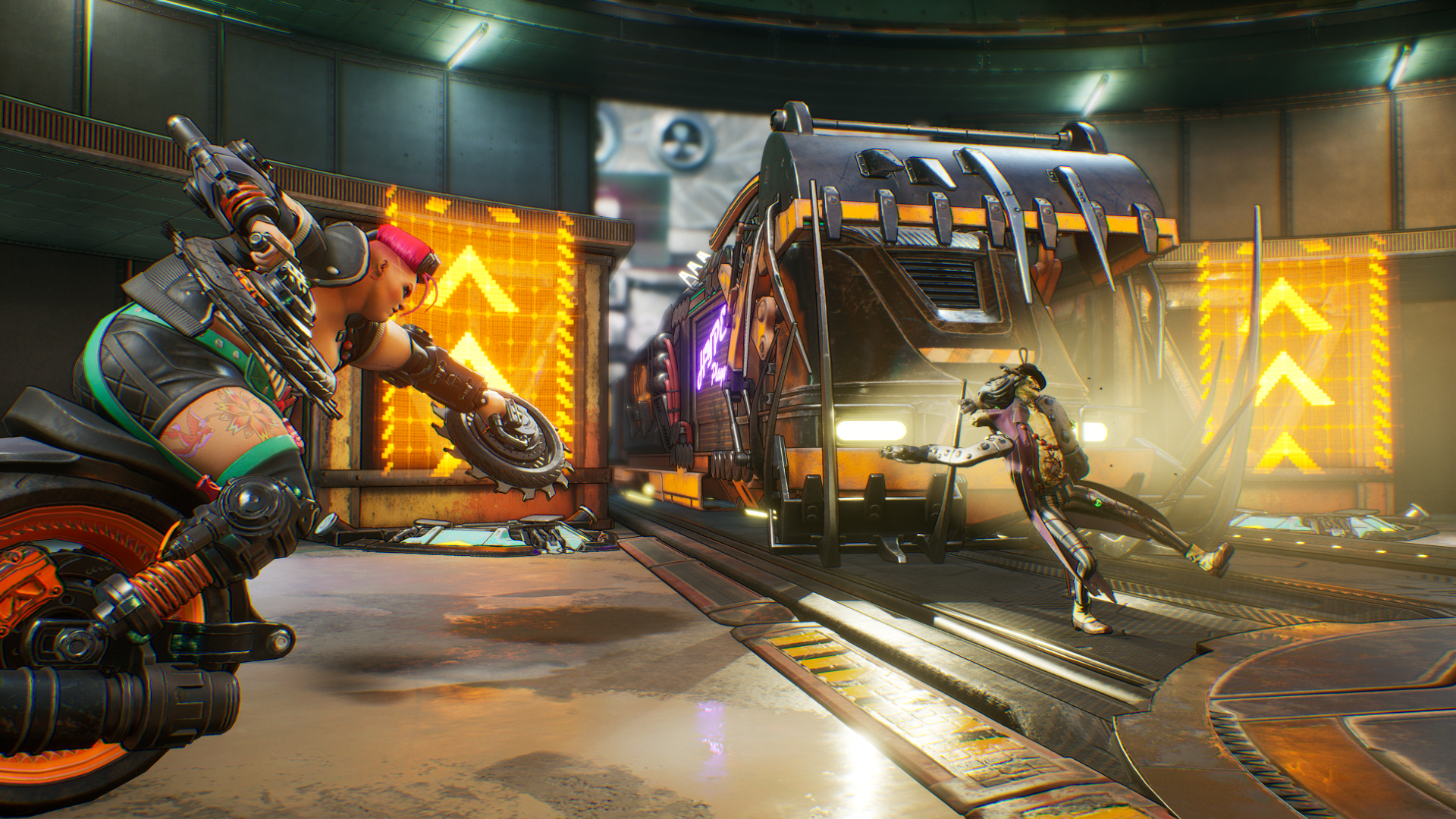
Four years of development later, Ninja Theory is confident in the quality of its creation. Although that isn't to say that there isn't apprehension in the air too. I spoke with over a third of the Bleeding Edge development team while visiting the studio, and while each member was proud of their work, there's also a fear that they may have missed something – that they might let the passionate community already building up around this game through its Beta weekends down. This is, after all, uncharted waters.
"It's been challenging, but in a fun way. Bleeding Edge is a type of game that I've always wanted to make because I play them all the time," Tucker continues, "But certainly one of the hardest parts has been figuring out all of the other stuff that goes around that with multiplayer. Like, you need an account. We need to secure credentials. We need matchmaking. We need online services. We need anti-cheat. We need so much stuff that we don't have any experience with."
"It was like, 'How do we even run a beta weekend?'," Gerald Poon interjects, the senior designer laughing as he does. "I don't know! I've never done it before…. none of us have."
Results out of the Alpha and Betas have been positive though. Proof that this studio is more than up to the challenge of creating a modern multiplayer game, one with all of the character and charm that we've come to expect from any creative endeavour bearing the Ninja Theory name. It's these public play sessions that have emboldened the team, giving them the confidence that when Bleeding Edge will connect with a large audience when it releases on March 24 for Xbox One and PC, and through Xbox Game Pass.
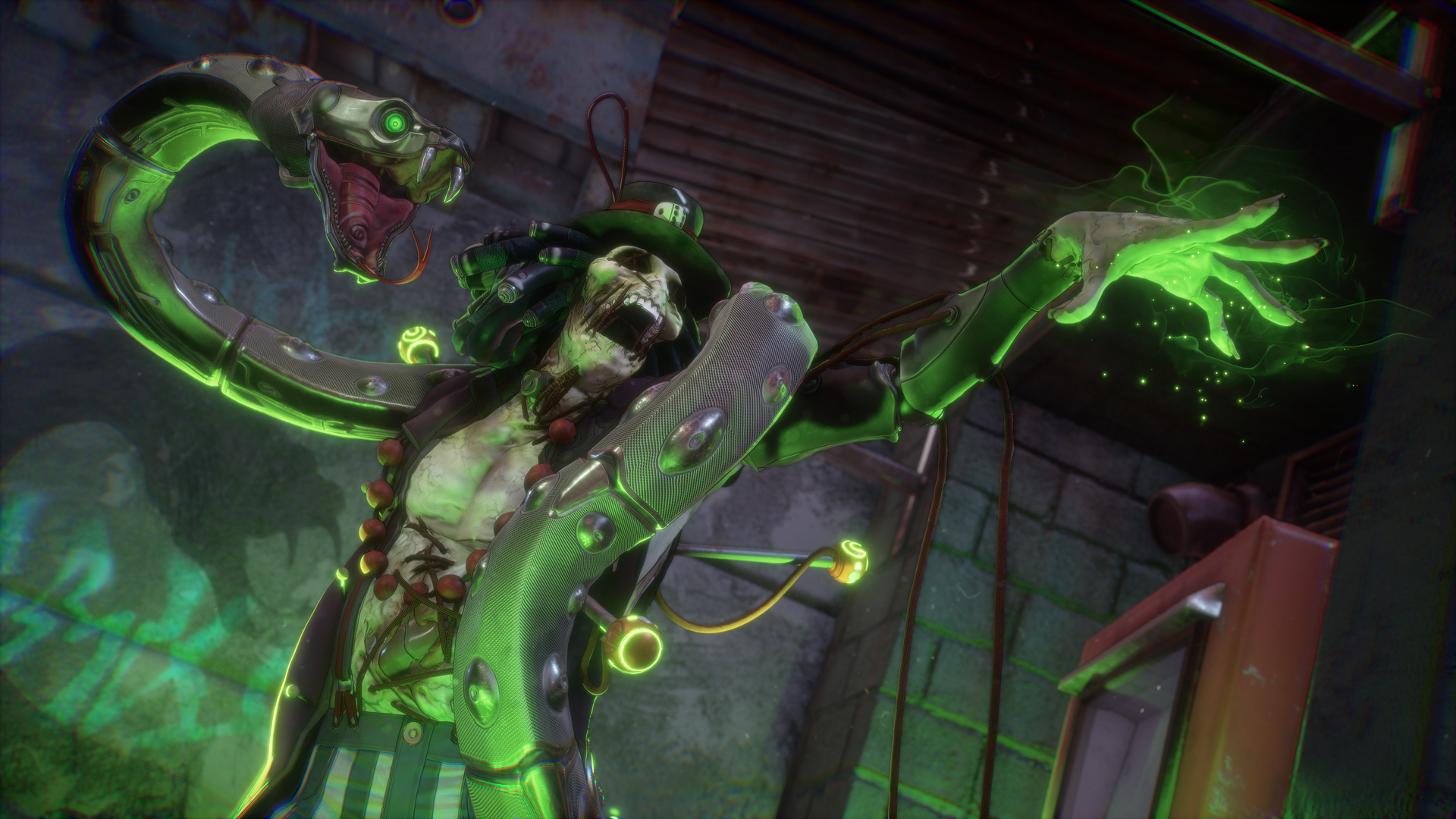
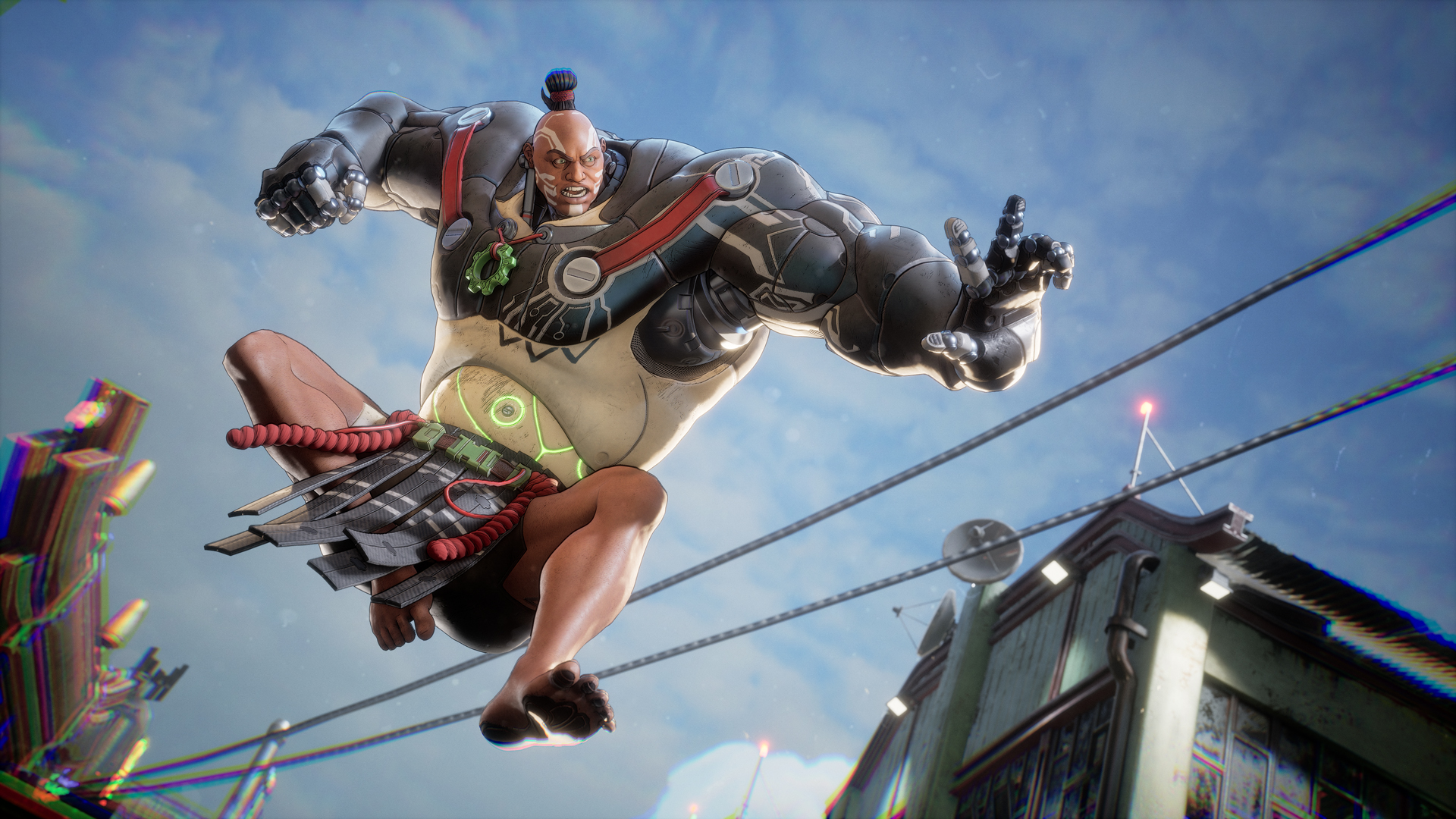
Bleeding Edge isn't a 'melee-Overwatch' – it's something else entirely, and it might just surprise you if you're willing to give it a chance.
"There has been apprehension, of course. But we've been privileged coming in every day to work on something that's kind of a passion project. We started with six people and it's kind of your baby," Mellow continues, as we discuss the development journey. "The last beta was really cool for us. It's been really cool to see that people actually, finally, understand the game. And I think the response, generally, has been overwhelming and positive. People are really excited, and for us, it's like, 'This is happening!' Man, it's kind of a relief, but it's also like… you know, it's a flow of emotions too, right?"
That flow of emotion, I'm certain, stems from a rocky reveal. Bleeding Edge was leaked days before its reveal, and it has struggled to escape the "Melee-Overwatch" label it was unceremoniously stamped with by Twitter and Reddit before any of us had even the chance to see it in action – to let the gameplay speak for itself. It's been difficult at times for the people of Ninja Theory, but each member of the team was confident that Bleeding Edge would find an audience if people were willing to give it a chance.
"It is terrifying," laughs Mellow. "And I remember when things were first released. You start looking at comments, and you're like, 'Oh my God, that one is an amazing, positive comment. That one's not so positive... I'm going to weigh it up against another comment!' And you can get kind of transfixed doing that. It's been different at every stage."
"You know, there are high levels of anxiety involved," Aaron McElligott tells me, Bleeding Edge's lead artist. "Because you've been playing and touching this thing for a long time. And we enjoy playing it. We play it daily, actually – groups of us. And there's lots of shouting at each other, and we have a good time. So we hope that because we're doing it, other people will also."
"But it's [been] really stressful," McElligott continues. "Because that doesn't stop the feeling of when you kind of, you know, push that button, and it's like, 'Oh my God, what if everyone hates it?'"
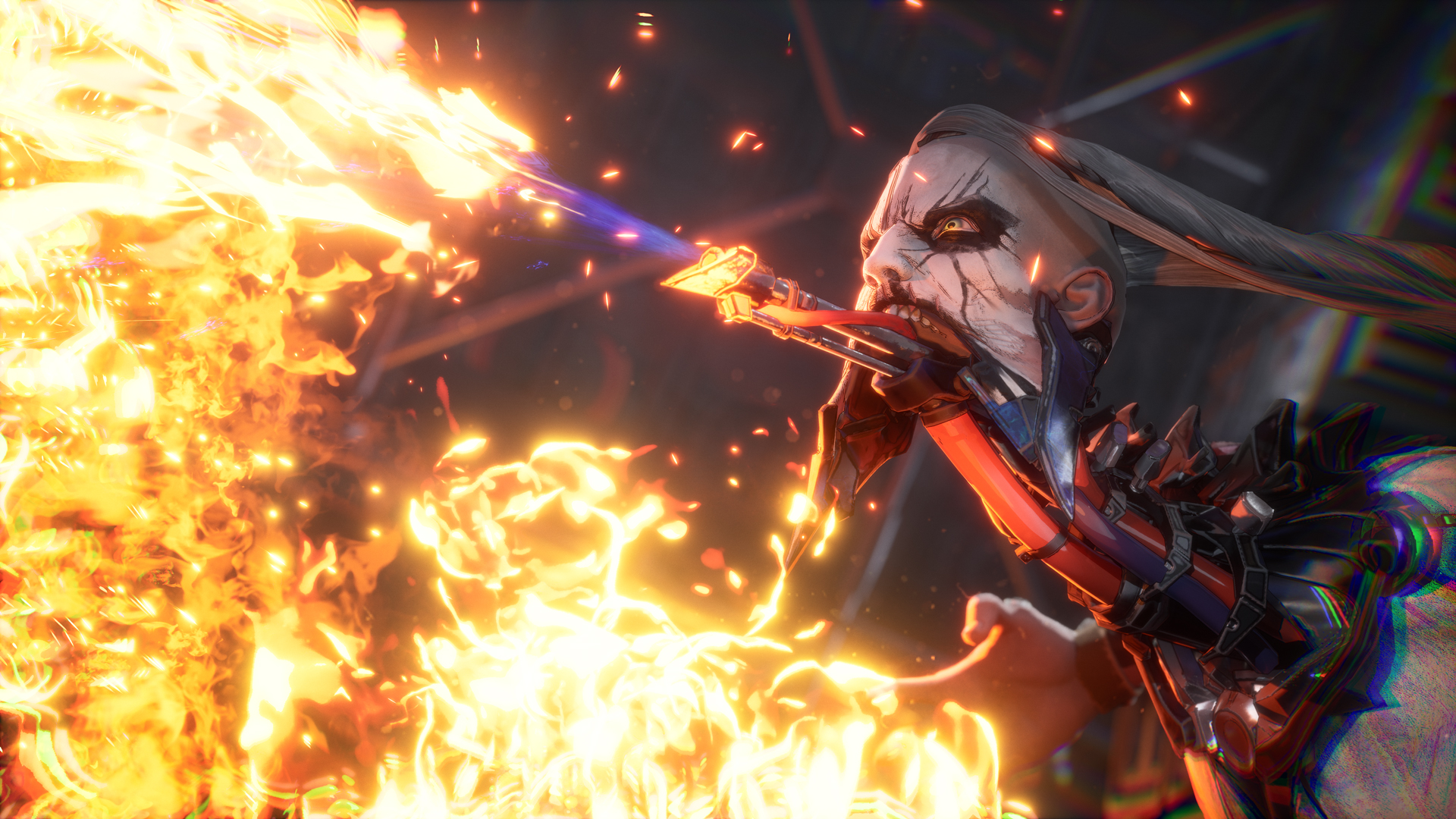
"I think there was a worry at one point. Like, is this going the right way? But we believe in these characters – we're not changing them"
Aaron McElligott, lead artist
The fallout from the reveal is a distant memory to the team now, but it's clear that many on the project still reflect on the experience. "There's definitely been comments about how some people do like it, and there were a number of negative comments from people who don't like this character…" says McElligott, trailing off as he collects his thoughts. "I think there was a worry at one point. Like, is this going the right way? But we believe in these characters – we're not changing them. I don't care. They're not being changed. I really love them. It's taken a long time to get them [here]."
McElligott believes that there's enough variation in the game – that the offering of characters is broad enough – that any player willing to give it a chance will find a character that they resonate with, and that they will enjoy pouring time into. The decision internally to not alter its creative vision – to stick to its guns – was an important one, one that Mellow believes has ultimately ensured that Bleeding Edge is shipping in the way the team had spent so many years dreaming it would.
"The moment you start trying to make it a game or a product for an audience, that's where you can start muddying the waters. You start saying, 'Oh, we better not do that, because these people won't like it. We better not do that, because those people won't like it.' And all of a sudden, you know, the product gets watered down," he says, adding, "It was one of those things that we knew that if we liked it, at least we've made something we really, really liked. The hope is that other people will too. It may not be for everybody, but there will be a group of people – loyal people – that would really dig it."
"That was part of the point of starting these small team projects," Tucker adds, firm in her dedication to Bleeding Edge. "This indie AAA idea that Tameem had – that he pioneered with Hellblade – is that you can make a passion project, and make the thing that you really want to make, and it doesn't have to sell to 50 million people. It can have a niche and maintain that."
Eyes on the prize
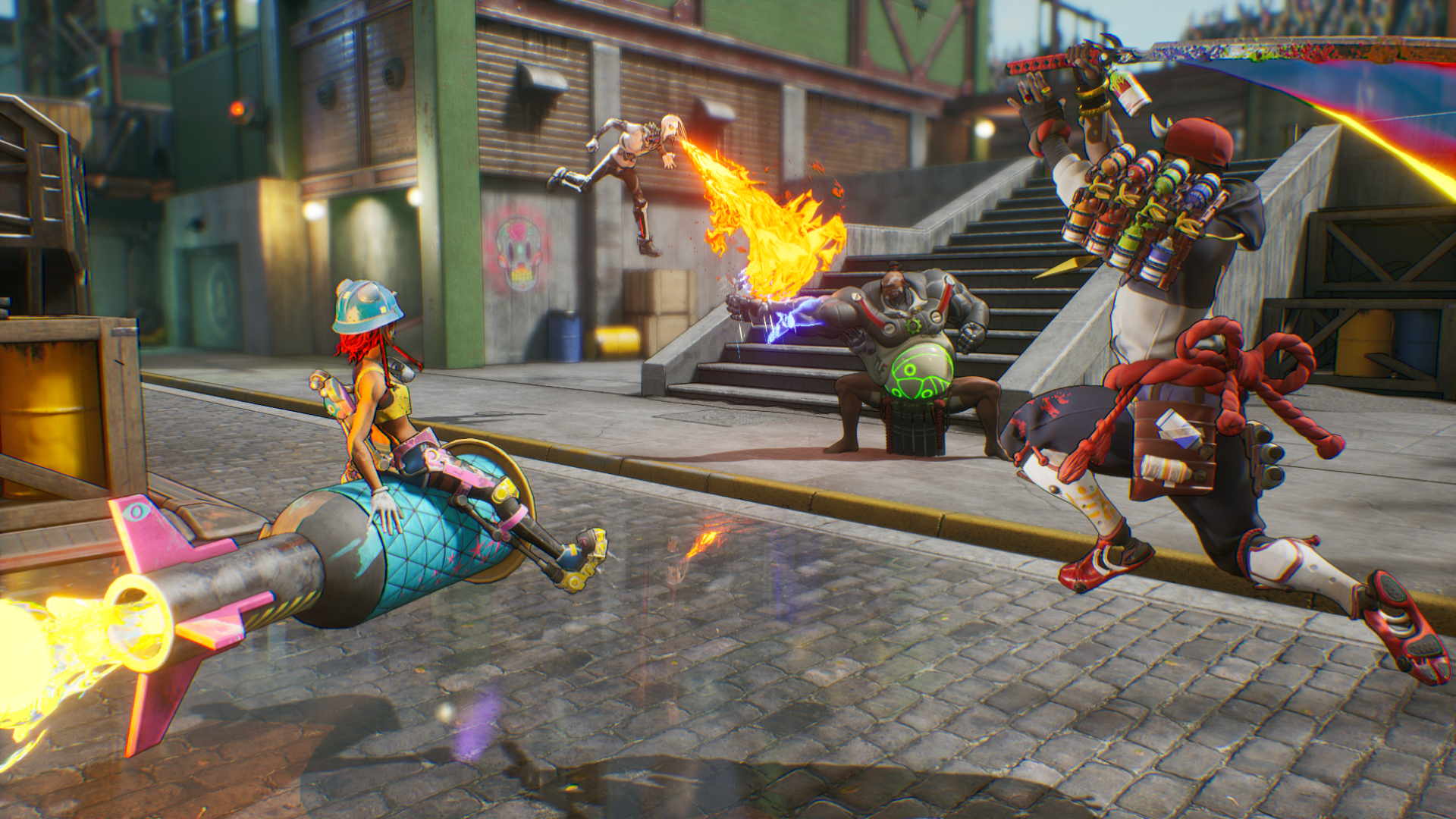
Bleeding Edge has been in daily playtests internally at the studio for years now. It's been in the hands of certain groups of competitive and casual players for over a year through alpha and beta programs, and soon it will be there for the whole world to play.
"We play test every day, and it gets pretty competitive," Poon tells me, although Tucker clarifies with a chuckle that it does in fact "get pretty heated!" So much so that the team had to create a Slack channel dedicated to internal venting titled "Salt Wounds" that members of Ninja Theory can take its… shall we say, creative criticism to after a round concludes. "It's for all the people who get really salty in the game, so they can go there and vent all their salt," Tucker continues, laughing. "'This is OP, and that's broken, and that map sucks, and this, that and the other!"
"It's always the losing team that says that," Poon says in retort, explaining that the team has had to create a careful internal filter between, "'you just lost, and you're salty' versus 'OK, that's a valid piece of feedback'. If someone won the game and then they make a complaint? That's when we should probably have a look into it because that's probably valid."
It's been a difficult journey for the group to get here. Spirits are high in Ninja Theory now, but hovering above it all are the trials and tribulations. From its initial prototype being shot down by publishers unwilling to put its faith in the studio, to its difficult reveal, to the challenge of building something completely foreign for the studio. Still, all eyes are March 24 now.
"It's going to be amazing. You have no idea," Tucker tells me, elated thinking about the coming day. "When we were doing the beta – the beta totally blew our expectations. We were so humbled and overwhelmed by the awesome response. We weren't prepared for how awesome that was going to be. But we were all here; we wanted to make sure that if something broke, we were there ready to take action. We had some food here, and we had champagne, and we had the graphs up on the TV – so we could see what was happening, to see if people were dropping out or if there was a problem with matchmaking or something. And then it just all started working."
"We've been working on the game for so long. And then suddenly, it's out there. It was really exciting," says Poon, with Tucker jumping in to put a final point on it: "Watching what people were doing, having fun with the characters and the game… that's it, isn't it? That's why we make games. It's super rewarding."

Bleeding Edge will likely be on Microsoft's next-generation system for launch. Why not read up on everything you need to know about the Xbox Series X while you wait for the console to launch Holiday 2020.

Josh West is the Editor-in-Chief of GamesRadar+. He has over 15 years experience in online and print journalism, and holds a BA (Hons) in Journalism and Feature Writing. Prior to starting his current position, Josh has served as GR+'s Features Editor and Deputy Editor of games™ magazine, and has freelanced for numerous publications including 3D Artist, Edge magazine, iCreate, Metal Hammer, Play, Retro Gamer, and SFX. Additionally, he has appeared on the BBC and ITV to provide expert comment, written for Scholastic books, edited a book for Hachette, and worked as the Assistant Producer of the Future Games Show. In his spare time, Josh likes to play bass guitar and video games. Years ago, he was in a few movies and TV shows that you've definitely seen but will never be able to spot him in.


